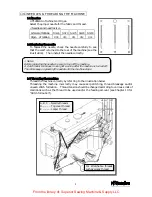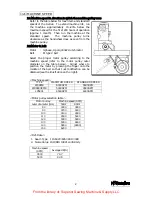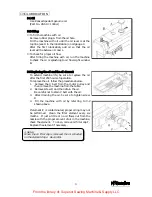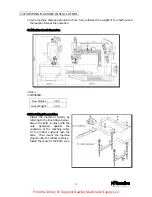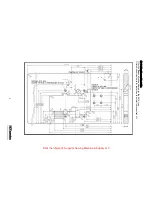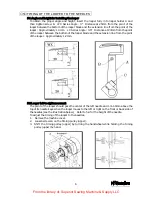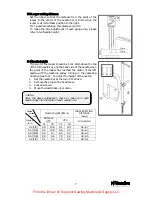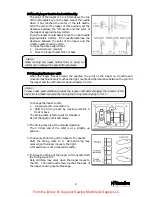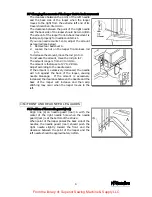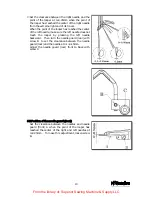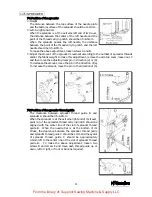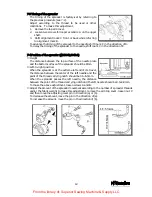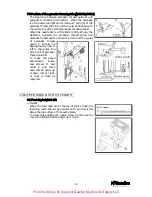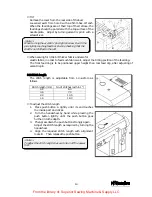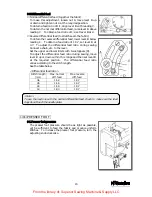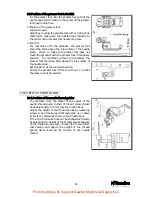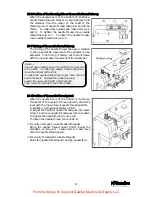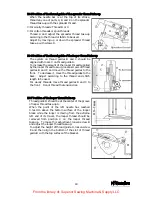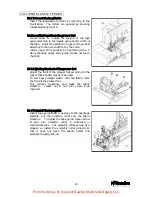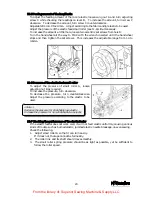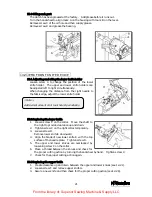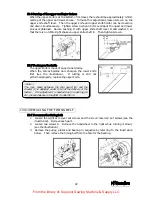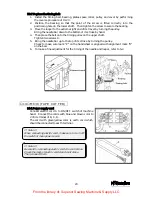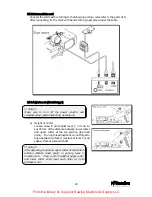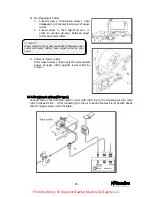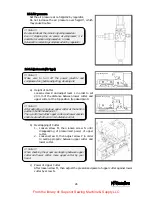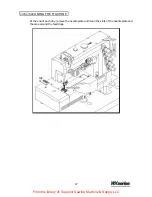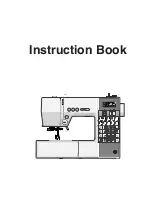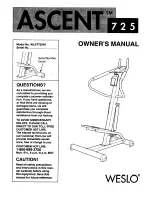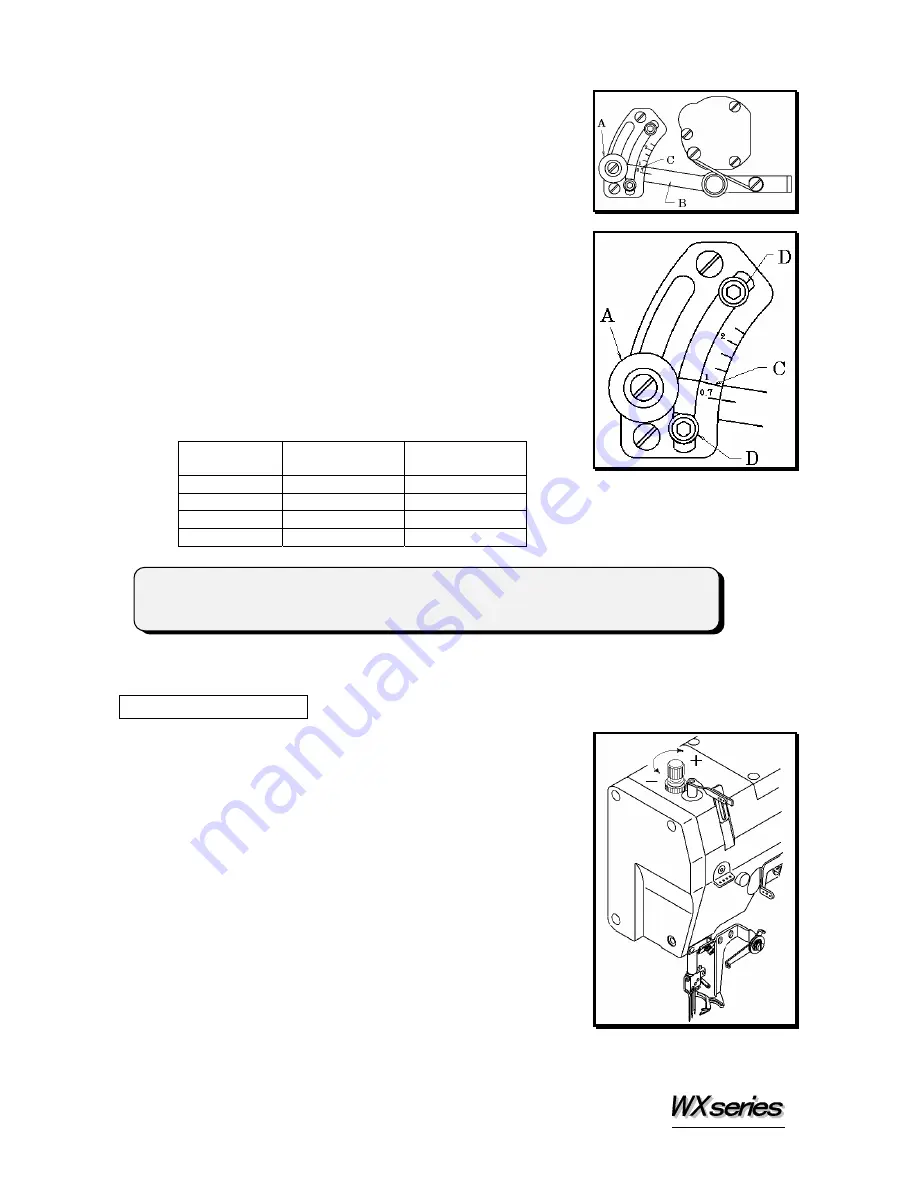
15
8-3 Differential feed
■
Normal differential feed (to gather the fabric)
To make this adjustment, loosen nut A, move lever B up
or down and tighten nut A at the required position.
To obtain a feed ratio of 1:1, align lever B with reading C.
To obtain the normal differential feed, raise lever B above
reading C. To obtain a feed ratio of 1:2, set lever B at 2.
■
Reverse differential feed (to stretch seam the fabric)
To obtain the reverse differential feed, lower lever B below
reading C. To obtain a feed ratio of 1:0.7, set lever B at
0.7. To adjust the differential feed ratio during sewing
Connect a chain, etc. to the lever.
Set the upper and lower limits with two stoppers (D).
To adjust the differential feed ratio during sewing, move
lever B up or down within this range and then set lever B
at the required position. The differential feed ratio
varies according to the stitch length.
See the table below.
< Differential feed ratio >
Stitch length
(mm)
Max. normal
diff. feed
Max. reverse
diff. feed
3.6
1:1.2
1:0.7
2.5
1:1.6
1:0.7
2.0
1:1.8
1:0.7
1.4
1:2.0
1:0.7
【
9
】
PRESSER FOOT
9-1 Presser foot pressure
The presser foot pressure should be as light as possible,
yet be sufficient to feed the fabric and produce uniform
stitches. To increase the presser foot pressure, turn the
adjusting knob clockwise.
< Note >
To use the machine with the normal differential feed, check to make sure the feed
dogs do not touch the needle plate.
From the library of: Superior Sewing Machine & Supply LLC

